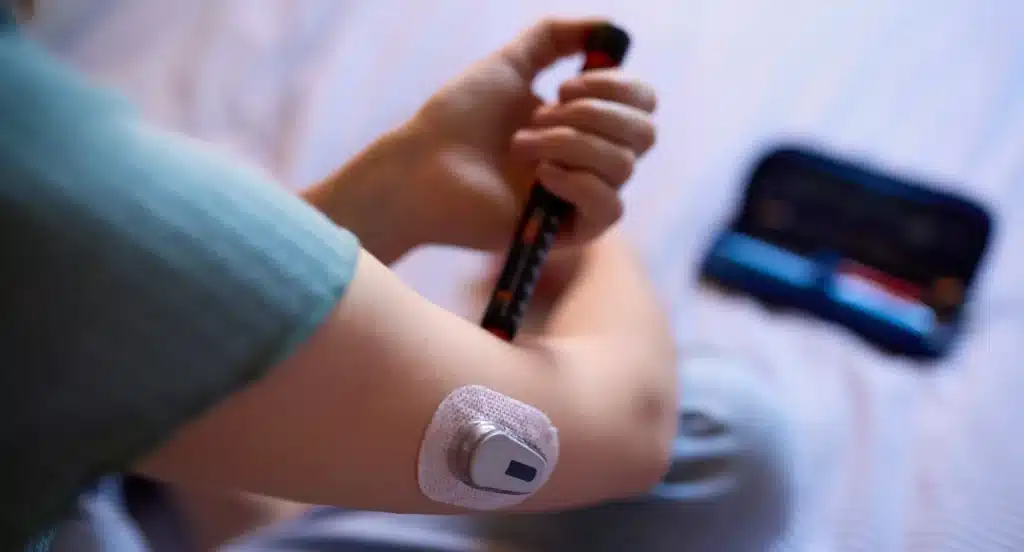In the realm of diabetes management, continuous glucose monitoring (CGM) has emerged as a transformative technology, offering real-time insights into blood glucose levels and enhancing the quality of life for individuals with diabetes. However, the full potential of CGM can only be realized when accompanied by comprehensive education. In this article, we delve into the critical importance of CGM education in promoting equitable diabetes care.
Understanding CGM
Continuous glucose monitoring (CGM) systems consist of sensors that measure glucose levels in the interstitial fluid every few minutes, providing users with real-time data on their glucose trends. This technology offers invaluable benefits, including:
Enhanced Awareness
CGM empowers individuals to make informed decisions about their diabetes management by providing insights into how diet, exercise, medication, and other factors affect their glucose levels.
Early Detection of Trends
CGM alerts users to hypo- and hyperglycemic events, enabling timely intervention to prevent complications.
Personalized Insights
CGM data allows for personalized adjustments to treatment plans, leading to improved glycemic control and overall well-being.
Despite these advantages, the effective utilization of CGM requires more than just access to the technology; it necessitates comprehensive education to ensure users can leverage its capabilities fully.
The Role of CGM Education in Promoting Equity
Equitable access to CGM technology is a critical component of diabetes care. However, true equity goes beyond mere accessibility—it encompasses the provision of education and support necessary to optimize its use. Here’s why Continuous Glucose Monitoring education is indispensable for promoting equity in diabetes care:
Empowering Patients
CGM education empowers individuals with diabetes to take control of their health. By understanding how to interpret CGM data and respond appropriately, patients can actively participate in their treatment decisions, leading to improved outcomes.
Addressing Disparities
Diabetes disproportionately affects marginalized communities, including racial and ethnic minorities, low-income individuals, and those with limited access to healthcare resources. CGM education plays a vital role in addressing these disparities by ensuring that all individuals, regardless of their background or socioeconomic status, have the knowledge and skills needed to utilize CGM effectively.
Read more How Community Pharmacists Empower Patients with Remote CGM Monitoring?
Cultivating Self-Advocacy
CGM education equips patients with the tools to advocate for themselves within the healthcare system. By understanding the value of CGM technology and its potential impact on their health, patients can articulate their needs to healthcare providers and insurance companies, advocating for access to essential resources.
Best Practices for CGM Education
To promote equitable diabetes care, it’s essential to implement comprehensive Continuous Glucose Monitoring education programs that address the diverse needs of individuals with diabetes. Consider these excellent practices,
Tailored Education: Recognize that individuals have varying levels of familiarity with diabetes management and CGM technology. Offer education programs that cater to different learning styles and levels of understanding, ensuring that each patient receives the support they need.
Multidisciplinary Approach: Collaborate with a multidisciplinary team of healthcare professionals, including endocrinologists, diabetes educators, nurses, and dietitians, to provide comprehensive Continuous Glucose Monitoring education. Each member can contribute their expertise to address the various aspects of diabetes management effectively.
Also, read more about Can You Effectively Manage Diabetes With Your Diet?
Continuous Support: CGM education is an ongoing process that requires continuous support and reinforcement. Offer follow-up sessions, support groups, and online resources to help patients navigate challenges and maximize the benefits of CGM technology.
Cultural Sensitivity: Recognize the cultural, linguistic, and socioeconomic factors that may impact patients’ access to and utilization of CGM technology. Provide education materials in multiple languages and tailor content to resonate with diverse cultural backgrounds.
Conclusion
CGM technology holds tremendous promise for revolutionizing diabetes care, but its full potential can only be realized through comprehensive education. By prioritizing CGM education and addressing the unique needs of all individuals with diabetes, we can promote equity, empower patients, and improve health outcomes for all. Let’s work together to ensure that Continuous Glucose Monitoring education becomes a cornerstone of equitable diabetes care.


